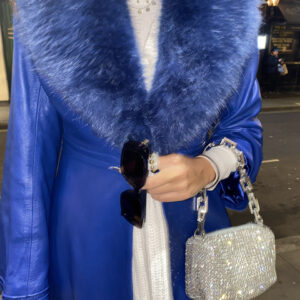Luxury Circularity: How brands are changing the mould of consumption

As environmental concern heightens, luxury brands must restructure the lifespan of goods to increase longevity in a circular model. MA Luxury Brand Strategy & Business student, Chloé Janssens takes a look into what the circular economy means for luxury fashion.
Circular Economy
Circularity within luxury fashion is a model of keeping garments away from landfill through rental, re-use, and resale programs. This can be accomplished both within a brand’s structure and through third-party luxury resale companies. Because of the elongation of a product’s lifespan, this trend is inherently sustainable and financially conscious, marketing to consumers’ desire to be a part of positive change. Consumers will also experience a return on their money, reinforcing the concept of luxury goods as financial investments.
In an increasingly socially and environmentally conscious industry, solutions to reduce fashion’s impact on the environment are at the forefront. Luxury brands are implementing resale programs, recycling initiatives, and the reuse of previous materials into their structures. The resale economy is now a giant in its own right, valued at around $25-30 billion with approximately 10 to 15 percent growth per year, according to McKinsey & Company.
“Luxury is meant to last forever. We need to raise awareness about a new way of consuming. Buying new has lost its shine.” – Fabienne Lupo, founder of ReLuxury event
View this post on Instagram
Rebag curates unique offerings of vintage handbags. | Source: Rebag
Brand Initiative: Gucci Vault
Gucci, a known leader in the luxury space, recently joined the circularity movement with the launch of Gucci Vault. Former Gucci Creative Director, Alessandro Michelle, conceptualised the Vault to merge past, present, and future trends in a singular, more sustainable place. The experimental online and physical space features vintage Gucci products that have been up-cycled in collaboration with thirteen emerging designers.
This crossover of digital experimentation and repurposed vintage meshed with the Gen Z consumer demographic. Many online items sold out immediately due to the one-of-a-kind nature of the offerings. The great success of Gucci’s Vault is an encouragement to leading fashion houses to follow suit.
View this post on Instagram
Garments are given a new life through Gucci’s Vault | Source: Gucci Vault
Third Party: The RealReal
In synergy with in-brand efforts of sustainability, third party resale companies have risen rapidly in the past decade. Among them, The RealReal set a high standard as the world’s biggest resource for authenticated luxury resale. Founded with the strong belief that the “future of fashion is circular,” the RealReal curates a selection of unique second-hand pieces that retain their beauty and value.
By curating hundreds of brand offerings to a singular platform, companies like the RealReal offer an elevated one-stop shopping experience. By changing consumer behaviours and encouraging resale shopping, carbon emissions are drastically reduced.
“Addressing the climate crisis means creating permanent change within the fashion industry and reversing the damage we’ve done.” – Julie Wainwright, CEO, The RealReal
View this post on Instagram
Source: The RealReal
The Future of Circularity
In the next two to five years, we will see a surge in circular programs. Hard luxury, like fine art, is not simply a garment or accessory, but a standalone statement. Lets immortalise iconic fashion and cultural eras by circulating the pieces of art specific to each period while fighting the looming climate crisis.
By Chloé Janssen – MA Luxury Brand Strategy & Business